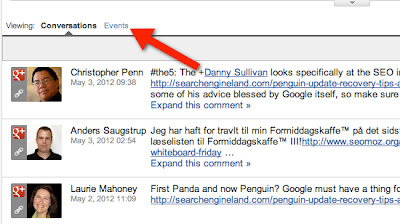Today the Google Analytics team announced that we will start seeing backlink URLs in their newly released Social Reports. According to the announcement post, written by Ilya Grigorik, Software Engineering Manager, Google Analytics (and PostRank Founder):
“These reports provide another layer of social insight showing which of your content attracts links, and enables you to keep track of conversations across other sites that link to your content. Most website and blog owners had no easy mechanism to do this in the past, but we see it as another important feature for holistic social media reports. When you know what your most linked content is, it is then also much easier to replicate the success and ensure that you are building relationships with those users who actively link to you the most.”
Where To Find The Backlink URLs Report
The Backlink information is not easy to find. First visit the pages tab on the Social reports (this link should take you directly to this report). Then click on a specific URL. Here is what you will see now:
As indicated in the screenshot above, click on the Activity Stream tab above the graphs. Then you will arrive at another page that gathers all Social Data Hub conversations related to this specific page, as seen below:
If you click the Events tab shown above you will find the Backlinks information. This information appears among all other social events like +1s, Delicious bookmarks, and others. For each backlink URL you will be able to View Activity, i.e. visit the page with link, or to View Page, i.e. view the page linked.
As you will see in the reports, while this information is very useful, it is still lacking a centralized place where users can see all the linked pages aggregated. The way this information is being organized is very focused on Social Media professionals, it treats links as another event related to the post. And the reports do not allow any filtering or segmentation. If we look at the Webmaster Tools (screenshot below), the information is more focused on SEOs, showing in a glance where the links are coming from and to which pages.
Social Signals And Backlinks In The Same Bucket
This addition is interesting in that Google decided to add this information to the Social reports instead of adding it to the SEO reports. This decision makes sense from a Google Analytics perspective as this information, like all other Social information, is a factor that happens outside the website and, as such, it could be analyzed in the same way we analyze Google+ activity.
However, this information is more often used by SEOs in order to optimize pages and understand which pages are getting the most links. As discussed above, it appears that these reports are more focused on Social Media professionals rather than SEO professionals.
It is also interesting to look at this in the light of Danny Sullivan’s post discussing Social signals for Google and Bing, this decision shows how backlinks and social signals are seen as part of the same bucket.





















